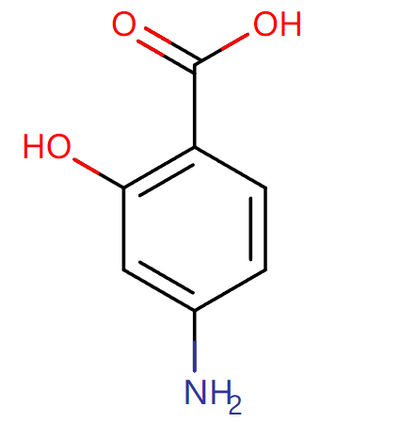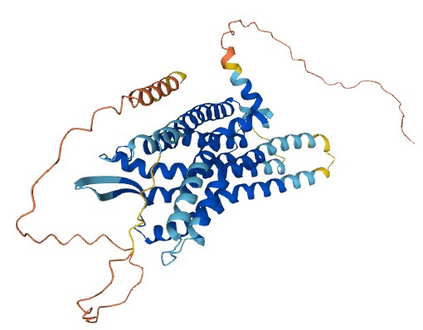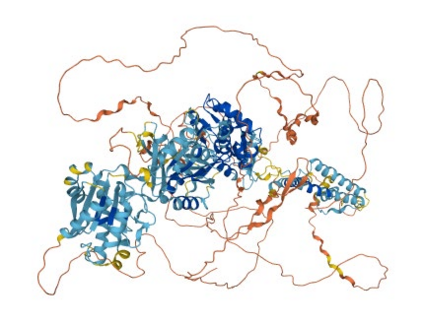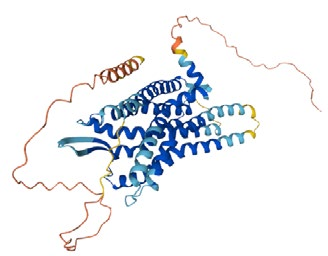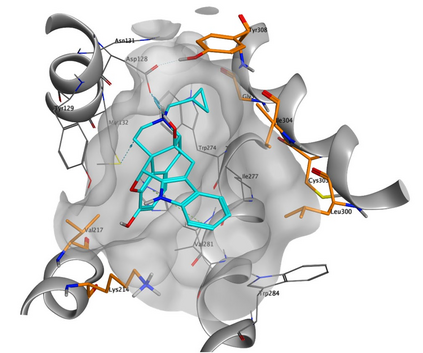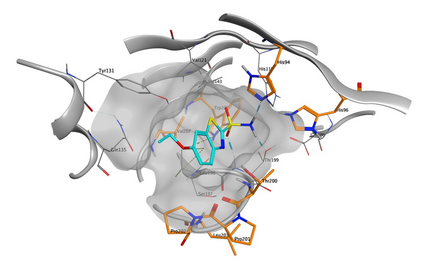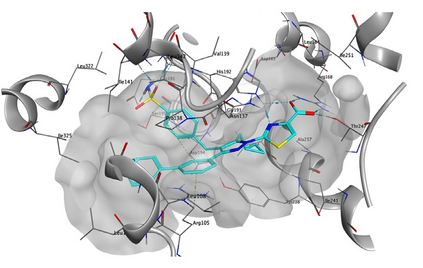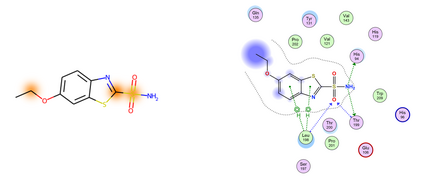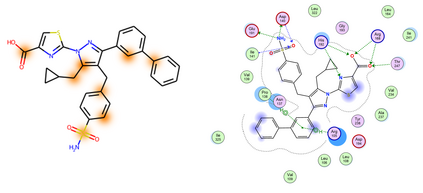Predicting drug-target interaction is key for drug discovery. Recent deep learning-based methods show promising performance but two challenges remain: (i) how to explicitly model and learn local interactions between drugs and targets for better prediction and interpretation; (ii) how to generalize prediction performance on novel drug-target pairs from different distribution. In this work, we propose DrugBAN, a deep bilinear attention network (BAN) framework with domain adaptation to explicitly learn pair-wise local interactions between drugs and targets, and adapt on out-of-distribution data. DrugBAN works on drug molecular graphs and target protein sequences to perform prediction, with conditional domain adversarial learning to align learned interaction representations across different distributions for better generalization on novel drug-target pairs. Experiments on three benchmark datasets under both in-domain and cross-domain settings show that DrugBAN achieves the best overall performance against five state-of-the-art baselines. Moreover, visualizing the learned bilinear attention map provides interpretable insights from prediction results.
翻译:预测药物目标的相互作用是药物发现的关键。最近的深层次学习方法显示了有希望的绩效,但仍然存在两个挑战:(一)如何明确模拟和学习药物与目标之间的局部互动,以更好地预测和解释;(二)如何推广不同分布的新型药物目标配对的预测性业绩。在这项工作中,我们提议建立药物BAN,这是一个深度双线关注网络框架,其领域适应性可明确学习药物与目标之间的双向地方互动,并适应分配以外的数据。药物分子图和蛋白序列用于进行预测,有条件的域对口学习,使不同分布的药物与目标之间的学习性互动反映相互一致,以更好地概括新型药物目标配对。在现场和交叉环境下的三个基准数据集的实验表明,药物BAN在五个最先进的基线下取得了最佳的总体业绩。此外,对所学的双线关注地图进行直观化,从预测结果中提供可解释的洞察的洞察力。


